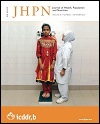Quality of Life and Mental Health Status of Arsenic-affected Patients in a Bangladeshi Population
DOI:
https://doi.org/10.3329/jhpn.v30i3.12289Keywords:
Arsenic, Arsenic contamination, Cross-sectional study, Mental health, Quality of life, WHOQOL-BREF, BangladeshAbstract
Contamination of groundwater by inorganic arsenic is one of the major public-health problems in Bangladesh. This cross-sectional study was conducted (a) to evaluate the quality of life (QOL) and mental health status of arsenic-affected patients and (b) to identify the factors associated with the QOL. Of 1,456 individuals, 521 (35.78%) were selected as case and control participants, using a systematic random-sampling method. The selection criteria for cases (n=259) included presence of at least one of the following: melanosis, leucomelanosis on at least 10% of the body, or keratosis on the hands or feet. Control (nonpatient) participants (n=262) were selected from the same villages by matching age (}5 years) and gender. The Bangladeshi version of the WHOQOL-BREF was used for assessing the QOL, and the self-reporting questionnaire (SRQ) was used for assessing the general mental health status. Data were analyzed using Students t-test and analysis of covariance (ANCOVA), and the WHOQOL-BREF and SRQ scores between the patients and the non-patients were compared. The mean scores of QOL were significantly lower in the patients than those in the non-patients of both the sexes. Moreover, the mental health status of the arsenic-affected patients (mean score for males=8.4 and females=10.3) showed greater disturbances than those of the non-patients (mean score for males=5.2 and females=6.1) of both the sexes. The results of multiple regression analysis revealed that the factors potentially contributing to the lower QOL scores included: being an arsenic-affected patient, having lower age, and having lower annual income. Based on the findings, it is concluded that the QOL and mental health status of the arsenic-affected patients were significantly lower than those of the non-patients in Bangladesh. Appropriate interventions are necessary to improve the well-being of the patients.
DOI: http://dx.doi.org/10.3329/jhpn.v30i3.12289
J HEALTH POPUL NUTR 2012 Sep;30(3):262-269
Downloads
150
163

